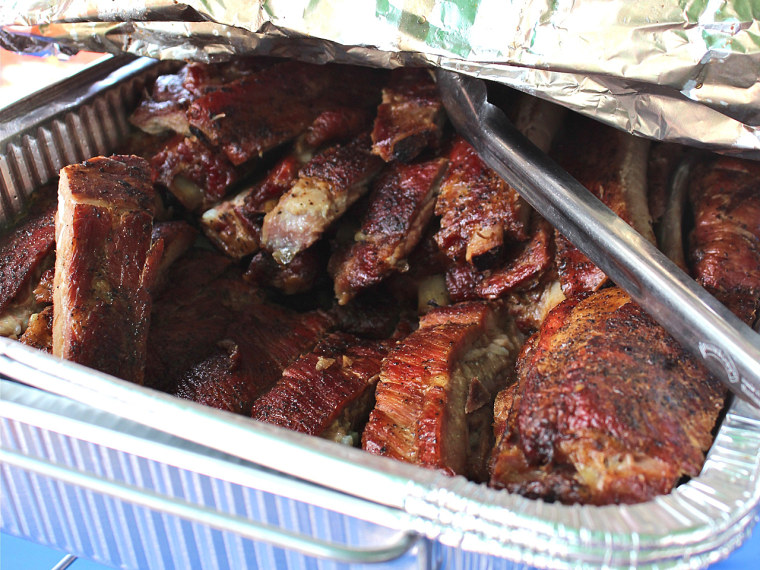
I am dialing the enemy’s phone number, and it’s making me a little nervous. I’ve been asked to write a post about food at college football games and, in preparation, I’m about to interview... a Tiger.
A purple-and-gold wearing, gumbo-guzzling Louisiana State Tiger. A seriously devoted one who hosts weekly LSU tailgate parties for upwards of 50 people. I’m sure he’s a fine human: his Facebook page shows him with lots of friends and a nice family.
The problem, you see, is that I’m a Gator from the University of Florida. And if you know anything about the South, you know we Gators don’t much care for Tigers. And the feeling is very mutual.
Ahead of our chat, James Roy has done a little checking on me, so he knows I’m calling from swampy rival territory. I shy away from sharing my favorite LSU joke — How do you keep a Tiger out of your yard? Put up a goal post! — and am certain he’s holding back on zingers of his own.
Instead, our conversation focuses on what happens off the gridiron, something special that defines Southern college football, something even enemies share: the sacred tradition of tailgating, which in our parts rivals weddings, birthdays and baptisms.
“It’s like a big family reunion,” says Roy, 37, who grew up across the street from the LSU campus. “But it’s also friends and their kids. It’s other fans who just walk up, come to eat good food and drink and have a great time.”
As the 2012 college football season gets underway this weekend, nowhere is team spirit more frenzied than in the South, especially in the Southeastern Conference (SEC) of which Florida and LSU are founding members and from which the last six national college champs have emerged.
“It’s a religion,” says Taylor Mathis, a food photographer who spent the last three years shooting Southern tailgates for a book he’s publishing next year. “And it’s serious. When fall Saturdays come, people block out those game days and no other plans are made. The tailgate is where they will be.”
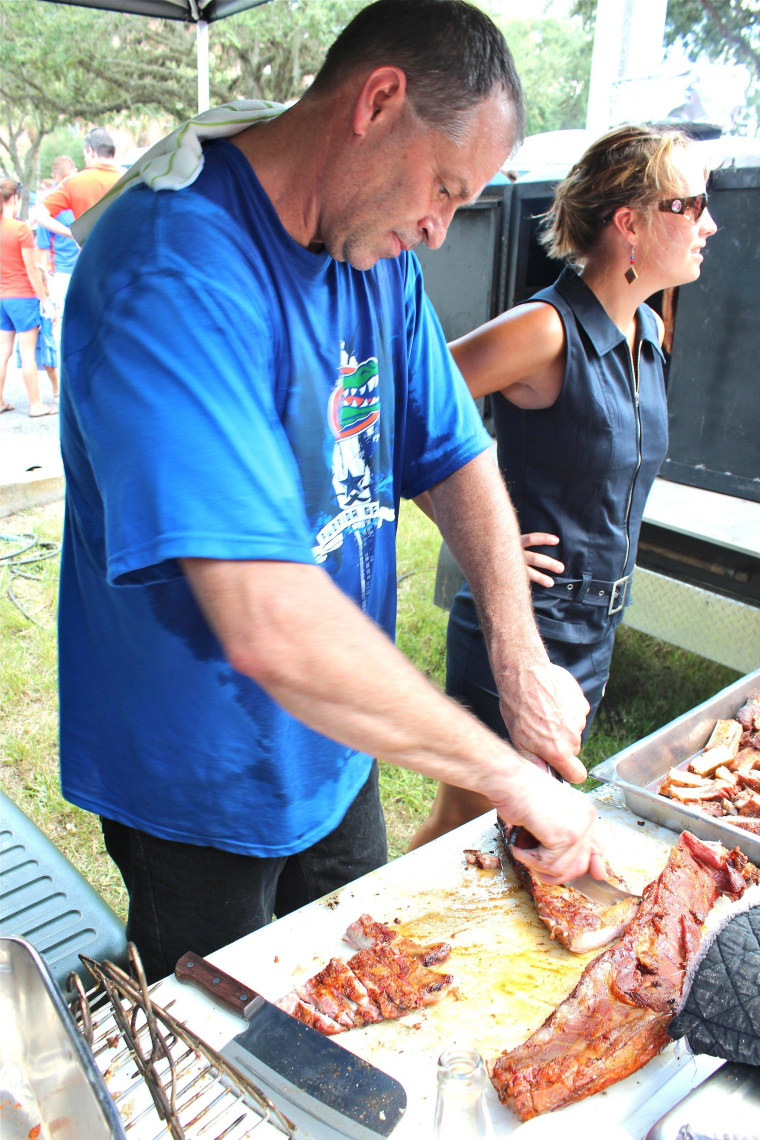
Despite an unrelenting year of college football controversy — Penn State, payoffs and injuries — ticket sales and tailgating parties down here are alive and well. Not to mention nicely stocked with classic Southern tailgate food including barbecued ribs and wings, coleslaw, pimento dip and, in the case of LSU, jambalaya, gumbo and something that resembles an alligator stew. (Ouch, that one hurt.)
It’s a tradition that dates back to the Civil War. Indeed, one of the first times Americans combined food with the cheering on of a “team” happened at the Battle of Bull Run in Virginia. Civilians from the Union side (that is, Yankees from the North) arrived at the field where the fight was to take place, bringing along baskets of snacks and drinks and cheering the soldiers with shouts of “Go Big Blue!” A decidedly un-PC precursor to the rowdy tailgating we now know.
Today, each SEC school’s tailgate has its own personality. The University of Mississippi (affectionately called Ole Miss) is known for a certain amount of formality, with hostesses setting tables with lace tablecloths and candelabras.
The University of South Carolina has 22 souped-up railroad cars (think Amtrak meets "Pimp My Ride") in which pre-game meals and parties take place. Alabama is just plain big, with nearly 1,000 tents pitched and pig roasts left and right. LSU, the master cooks of the SEC, is all about exquisite Cajun food.
As for my beloved Florida, we’re famous for turning a mere football tailgate into the country’s biggest block party, on nine acres of land. It happens annually when we play the University of Georgia Bulldogs at the Florida-Georgia Bowl in Jacksonville.
Like a good Gator, I attended last weekend’s season opener and my first tailgate of the year. It was a day of reunions and insanely good food, including spiced boiled peanuts, liquor-spiked cookies (hello, it’s UF) and the best ribs I’ve ever had. It took some work, but I convinced the cook, local caterer Gary Lee, to share his secret recipe and technique.
Also below (and against my better Gator judgment) is a recipe for a Cajun alligator sauce piquante from LSU tailgater Neal Lambert, plus one for an Alabama pork fest from Shane Hill, who recently published the Alabama Tailgate Cookbook.
Oh, and Roy — the enemy — I called? It turns out he’s alright. For a Tiger.
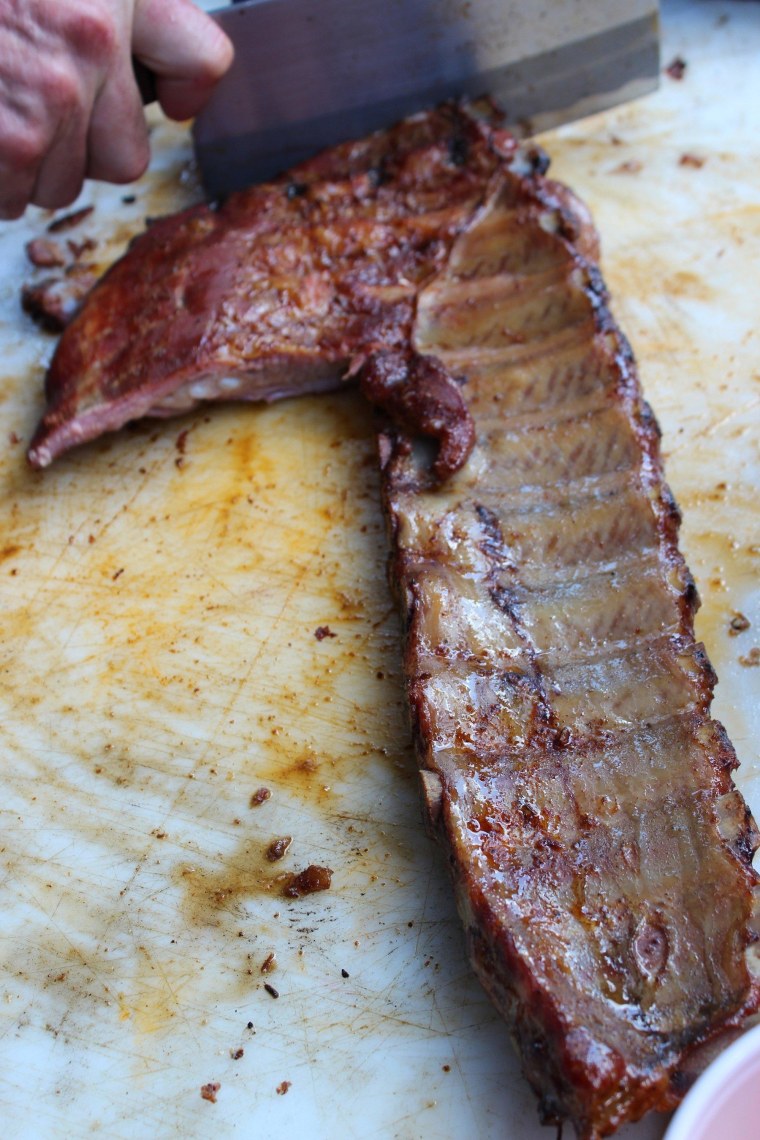
Florida-style smoked ribs
1 full rack of pork ribs, silver skin removed
1/4 cup Lawry’s seasoned salt
1/4 cup coarsely ground black pepper
1/4 cup of your favorite barbecue rub (such as A.C. Legg Old Plantation Seasoning)
1/2 cup apple juice
1/2 cup Worcestershire sauce
1. Turn your oven’s broiler to 500 degrees, and place an oven rack in the middle position.
2. In a small bowl, combine the seasoned salt, pepper and the rub and mix well. Set aside. In a bowl or bottle, combine the apple juice and the Worcestershire sauce. Set aside.
3. In a commercial grade sheet pan that’s at least 1-inch deep and capable of withstanding high heat, or in a thick broiler pan, place the ribs. Sprinkle the rub mix generously over both sides of the ribs. Leave them bones side up.
4. Place the ribs under the broiler and leave in the oven for about 10 or 15 minutes, watching until they become nicely charred. Turn them over and repeat on the other side, for an additional 10 to 15 minutes.
5. Remove the ribs from the oven. Lower the heat to 175. Pour the apple juice mixture into the pan so that it comes up about one quarter of the way. Cover tightly and return to oven for an additional 15 minutes. The ribs are done when they’re fork tender.
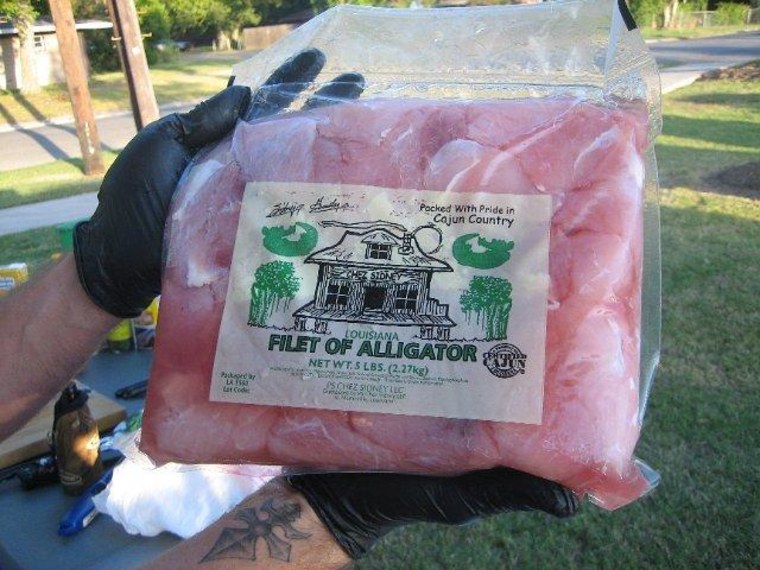
Cajun alligator sauce piquante
2 1/2 pounds alligator meat, cut into 1-inch cubes
1 cup vegetable oil
1 cup flour
3 cups fresh cut onions
2 cups diced celery
1 cup diced green bell pepper
1/4 cup minced garlic
2 (10- ounce) cans RoTel
2 quarts of chicken stock (see recipe)
Salt and cracked black pepper to taste
1/4 cup chopped parsley
3/4 cup sliced green onions
In a heavy-bottomed pot, heat vegetable oil over medium-high heat. Whisk in flour, stirring constantly until a dark brown roux is achieved.
Add alligator and sauté 10 minutes or until well browned. Stir in onions, celery, bell pepper and minced garlic and sauté 3 to 5 minutes or until vegetables or wilted.
Stir in RoTel and chicken stock, blend well, then season to taste with salt, pepper, granulated garlic and hot sauce. Bring mixture to a rolling boil then reduce heat to medium. Simmer 2 hours or until meat is tender, adding water or chicken stock to retain volume if necessary.
Add parsley and green onions and adjust seasonings to taste using salt, pepper and granulated garlic. Serve hot over steamed, long grain white rice. Makes 6 servings.
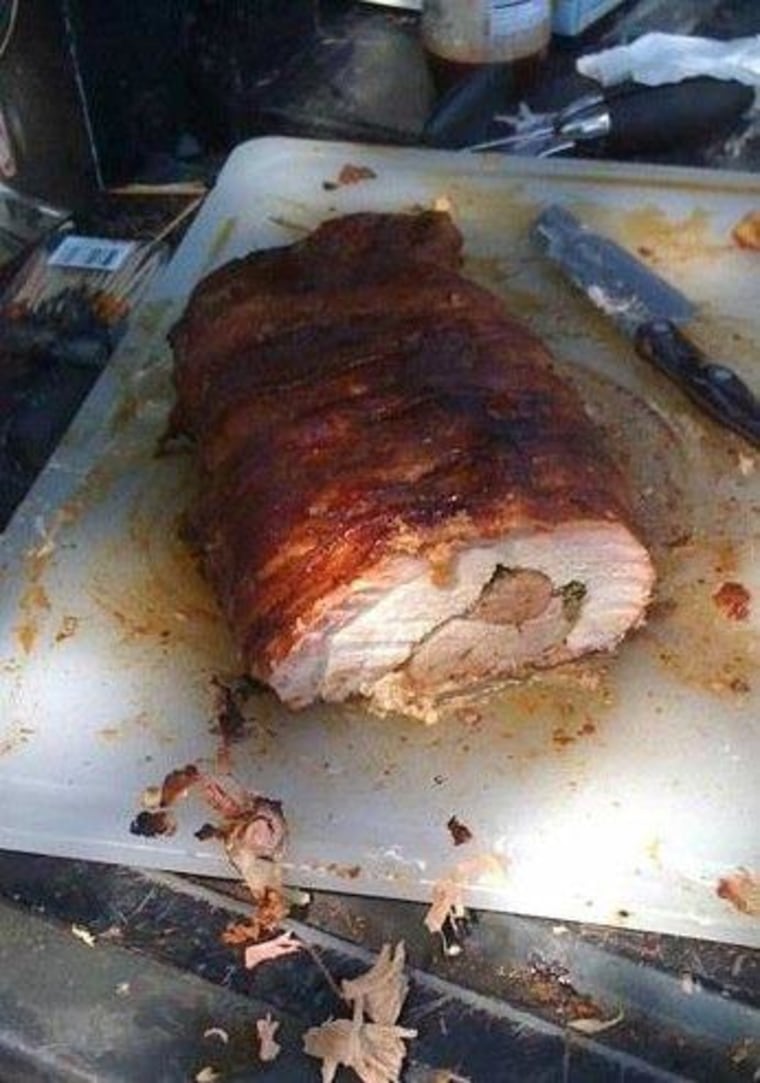
Alabama pork on pork on pork stuffed with pork
1 whole pork loin (cut to the length of the pork tenderloin)
1 link of smoked sausage (cut to the length of the pork tenderloin)
1 whole pork tenderloin
1 cup spinach
6 strips of bacon
1 package of pepper jack cheese
1 cup barbecue rub
Salt and pepper
Cut pork loin and tenderloins down the middle about 2/3 of the way through (you are making room to stuff everything else). Coat all loins with barbecue rub, salt and pepper.
Place the tenderloin with the cut facing up and place the sausage link in the cut. Cover the tenderloin with the cheese and spinach. Place the pork loin over the tenderloin/sausage using the cut in the loin to hold everything. Pull it all in tight and wrap the whole thing with bacon. Cover with more barbecue rub.
Place the pork log in a smoker at 230 and smoke until the internal temp gets to 160. If you are unsure of the temperature, consult the USDA’s guidelines.
Betty Cortina, senior consulting web producer for NBCLatino.com, believes salsa (the condiment as well as the music) makes the world a more delicious place.
More:
Rep your team! Craft beers to kick off football season